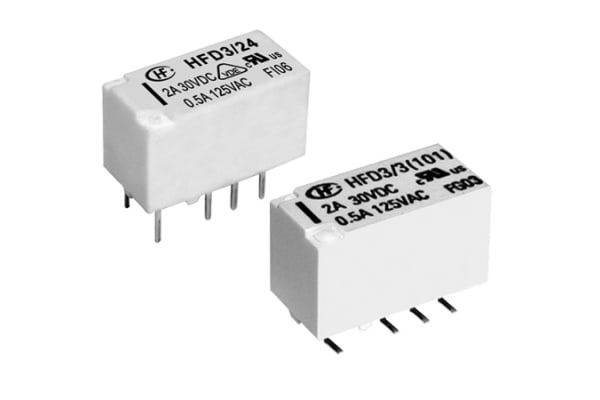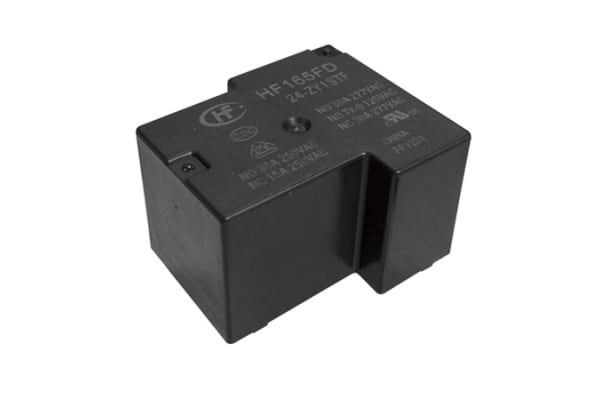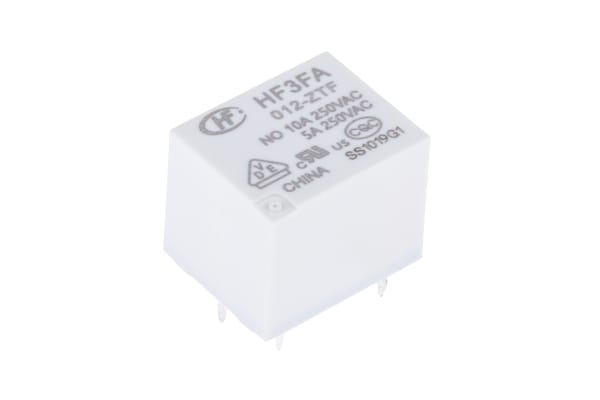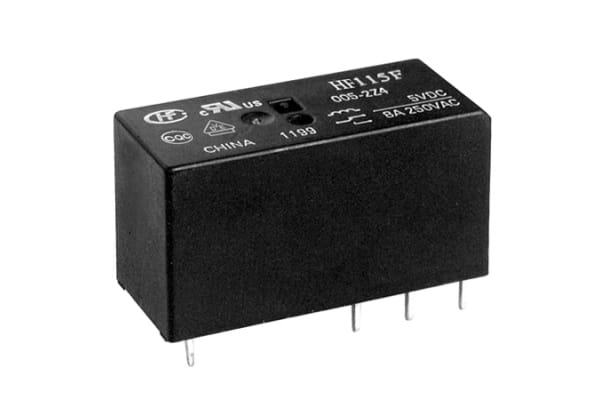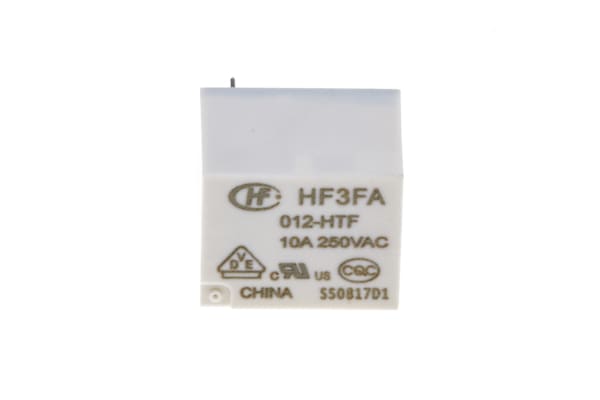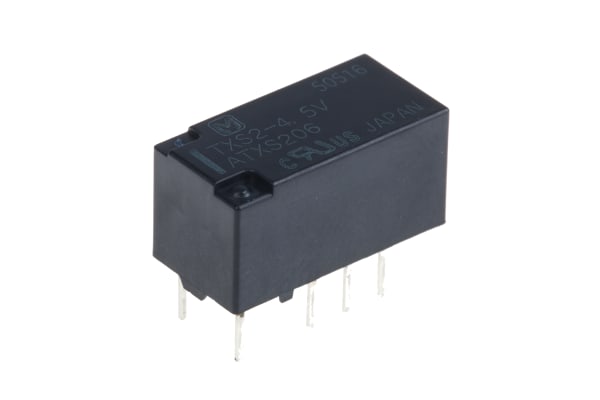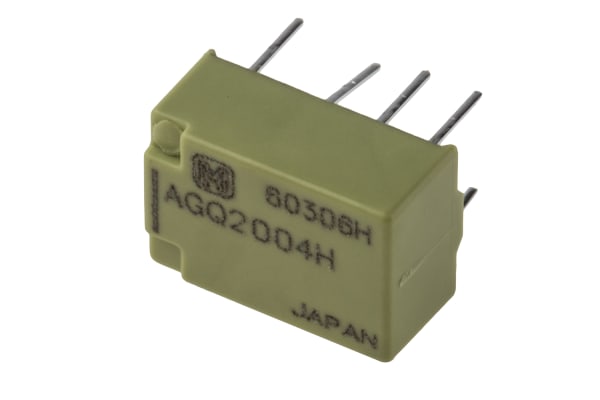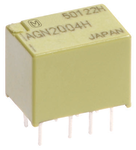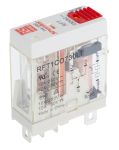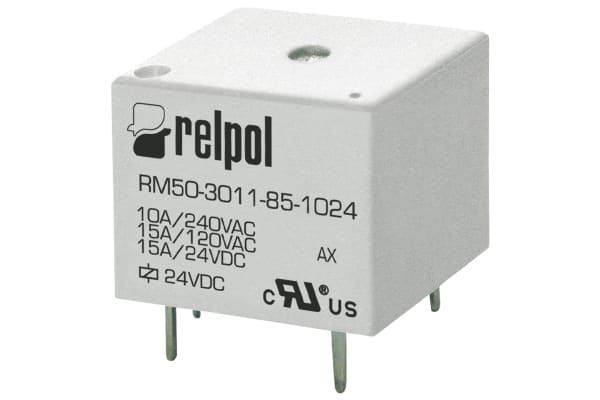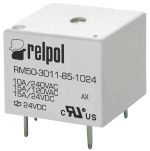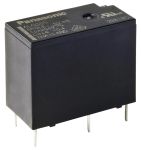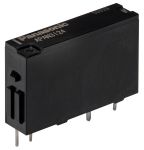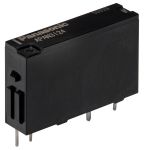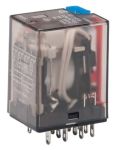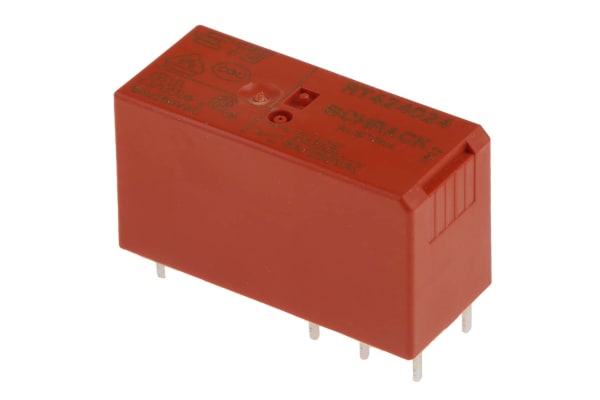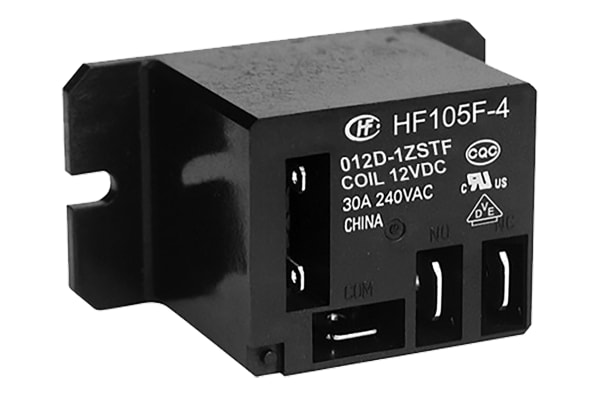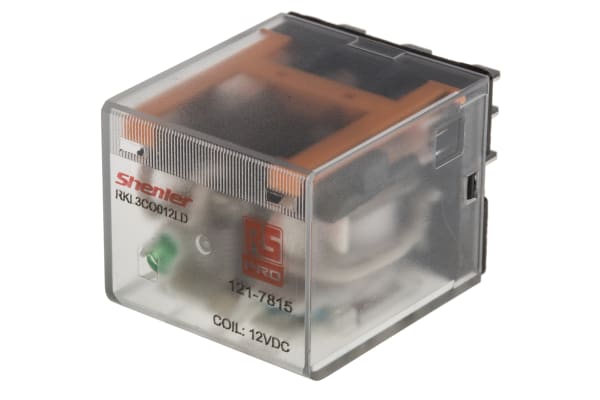Non-Latching Relays
Relays are electrical switches that are operated by electrical impulses with the primary function to open and close a circuit, they can also be referred to as industrial switches. There are 2 main types available, latching and non–latching relays.How do non-latching relays work?Non-latching relays are in a normally closed (NC) position and will stay in this state without power. When power passes through the circuit, the relay switched to a normally open (NO) position by using an internal coil to generate a magnetic force, holding this NO position. Once the current is turned off, it returns to the NC position. This makes non-latching relays well suited to push-button applications like keyboards and micro-controller input buttons.What are non-latching relays used for?Non-latching relays are highly durable and versatile components, making their performance long lasting and suitable for use in a wide range of applications, such as:Automotive enginesHousehold appliancesIndustrial machineryMedical equipmentTelecommunications equipmentWhat is the difference between latching and non-latching relays?Both types of relays in similar in design and function, however, a significant difference between them is that a latching relay will remain in the last position it when it was last powered, whereas a non-latching goes back to its normal position. This makes each more type of relay suitable for different applications. Considerations when selecting a relayWhen choosing a relay, it is important to consider a number of specifications to ensure it is fit for purpose, some factors include:Coil voltage – the required voltage to actuate the switching mechanism. If a voltage is too high this could damage the components, if it is too low then it will not actuate. Contact configuration – This is the state the contacts are in without power. For example SPST, single pole single throw.Contact material – the relay contacts are available in many materials that have certain properties. Common materials are gold, silver, tin oxide and nickel Coil power – the amount of power (watts) the coil operates at. This must match the power in the circuit for correct function. Coil resistance – the amount of resistance (ohms) in the circuit that the coil creates.
-
Hongfa Europe GMBH, 5V dc Coil Non-Latching Relay DPDT, 4A Switching Current Surface Mount, 2 Pole, HFD3/005-S
IDR155,551.87Pack (1 Pack of 5) -
Hongfa Europe GMBH, 24V dc Coil Non-Latching Relay SPNO, 30A Switching Current PCB Mount Single Pole, HF165FD/24-HY1TF
IDR95,135.23Pack (1 Pack of 2) -
Hongfa Europe GMBH, 12V dc Coil Non-Latching Relay SPDT, 10A Switching Current PCB Mount Single Pole, HF3FA/012-ZTF
IDR125,868.00Pack (1 Pack of 5) -
Hongfa Europe GMBH, 12V dc Coil Non-Latching Relay DPDT, 8A Switching Current PCB Mount, 2 Pole, HF115F/012-2ZS4BF(610)
IDR79,821.29Pack (1 Pack of 2) -
Hongfa Europe GMBH, 12V dc Coil Non-Latching Relay SPNO, 15A Switching Current PCB Mount Single Pole, HF3FA/012-HTF
IDR101,638.41Pack (1 Pack of 5) -
Panasonic, 4.5V dc Coil Non-Latching Relay DPDT, 1A Switching Current PCB Mount, 2 Pole, TXS2-4.5V
IDR1,516,080.06Tube (1 Tube of 40) -
Panasonic, 24V dc Coil Automotive Relay SPDT, 40A Switching Current PCB Mount Single Pole, CB1-M-24V
IDR4,506,703.74Box (1 Box of 50) -
Panasonic, 24V dc Coil Non-Latching Relay DPDT PCB Mount, 2 Pole, JW2SN-DC24V
IDR5,139,610.00Box (1 Box of 100) -
Panasonic, 4.5V dc Coil Non-Latching Relay DPDT PCB Mount, 2 Pole, AGQ2004H
IDR1,853,091.63Tube (1 Tube of 50) -
Panasonic, 4.5V dc Coil Non-Latching Relay DPDT, 1A Switching Current PCB Mount, 2 Pole, AGN2004H
IDR4,000,189.93Tube (1 Tube of 50) -
TE Connectivity, 24V dc Coil Non-Latching Relay SPNO, 8A Switching Current PCB Mount Single Pole, OJ-SH-124LMH
IDR7,580,400.30Bag (1 Bag of 500) -
RS PRO, 230V ac Coil Non-Latching Relay SPDT, 10A Switching Current Plug In Single Pole
IDR158,279.01 -
Relpol, 12V dc Coil Non-Latching Relay SPDT, 15A Switching Current PCB Mount Single Pole, RM50-3011-85-1012
IDR69,227.40 -
Relpol, 3V dc Coil Non-Latching Relay SPDT, 15A Switching Current PCB Mount Single Pole, RM50-3011-85-1003
IDR67,024.71 -
Panasonic, 24V dc Coil Non-Latching Relay SPDT PCB Mount Single Pole, ALQ1F24
IDR31,467.00 -
Panasonic, 24V dc Coil Non-Latching Relay SPNO, 5A Switching Current PCB Mount Single Pole, APAN3124
IDR77,513.71 -
Panasonic, 5V dc Coil Non-Latching Relay SPNO, 5A Switching Current PCB Mount Single Pole, APAN3105
IDR63,248.67 -
Wago, 24V dc Coil Non-Latching Relay 4PDT, 36.9mA Switching Current DIN Rail, 4 Pole, 858-150
IDR95,449.90 -
TE Connectivity, 24V dc Coil Non-Latching Relay DPDT, 8A Switching Current PCB Mount, 2 Pole, RT424024 6-1393243-8
IDR635,528.51Box (1 Box of 20) -
TE Connectivity, 12V dc Coil Non-Latching Relay DPDT, 5A Switching Current PCB Mount, 2 Pole, V23079A1003B301
IDR2,501,102.05Tube (1 Tube of 50) -
TE Connectivity, 24V dc Coil Non-Latching Relay DPDT, 8A Switching Current PCB Mount, 2 Pole, RTE24024
IDR801,674.27Box (1 Box of 20) -
TE Connectivity, 12V dc Coil Non-Latching Relay SPNO, 10A Switching Current PCB Mount Single Pole, OJE-SH-112HM,000
IDR141,181.94Pack (1 Pack of 5) -
Hongfa Europe GMBH, 12V dc Coil Non-Latching Relay SPDT, 20A Switching Current Flange Mount Single Pole,
IDR86,429.36 -
RS PRO, 12V dc Coil Non-Latching Relay 3PDT, 10A Switching Current Plug In, 3 Pole
IDR187,123.76



